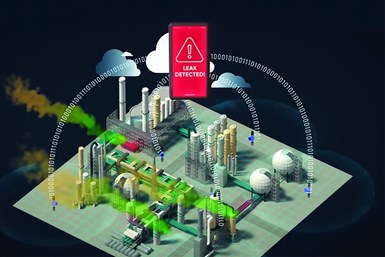Leak Detection Solution Receives EPA Approval
The public-private partnership solution was developed collaboratively by Molex, the EPA and Flint Hills Resources to meet EPA Method 21 monitoring requirements.
#controls #standards
mPACT2WO, a Molex business, today announced AirCompliance, a groundbreaking, end-to-end leak detection solution that systemizes an Alternative Means of Emission Limitation (AMEL) as approved by the U.S. Environmental Protection Agency (EPA). This is a result of a multi-year collaboration between Molex, the EPA and Flint Hills Resources (FHR) to innovate a fixed, continuous detection mechanism as an alternative to existing manual component-by-component periodic EPA Method 21 monitoring requirements.

Existing manual component-by-component periodic EPA Method 21 monitoring requirements have been in place for more than 40 years. Implementing these requirements is challenging due to the time-based and human-dependent approach. Emerging sensor technologies and state-of-the-art software approaches offer the potential to address the limitations in meeting existing Method 21 monitoring requirements.
In 2017, the EPA ORD CEMM, FHR, and Molex, LLC, a global electronics and connectivity company, initiated work under a cooperative research and development agreement to explore new next-generation emission measurement based detection techniques for refineries, petrochemical manufacturing and other industrial facilities. The group successfully developed and tested a first-of-its-kind leak detection sensor network (LDSN) that operates with specialized facility procedures defined in a detection response framework (DRF) to produce an integrated emission monitoring and documentation system. The LDSN-DRF system demonstrated improved fugitive emission detection and mitigation capability for select applications during pilot deployments in operating refineries and chemical manufacturing facilities.
“The three-way technology, regulatory and industry partnership shows the potential for successful development of innovative concept-to-compliance solutions,” said Krishna Uppuluri, vice president and general manager of mPACT2WO. “We value and appreciate the multi-year collaboration with EPA and FHR to ensure LDSN meets the regulatory and industry expectations. With the EPA AMEL approval framework, the AirCompliance solution will now enable a wide variety of industrial facilities to adopt an optimal alternative to their existing Method 21 implementations.
“Based on our innovative technology, Molex’s AirCompliance is designed to be a holistic solution for expansion beyond LDAR applications to additional emissions monitoring use cases such as fenceline, tank farms, process safety and other community-partnership activities,” Uppuluri continued.
“At Flint Hills Resources, we are in constant pursuit of innovative methods to achieve superior outcomes for environmental compliance and operational excellence,” said Chip Hilarides, vice president, quality and stewardship. “Our collaboration with Molex and the EPA shows the power of transformation when technology, regulatory and industrial innovations come together. This collaboration is part of our overall stewardship approach to continually reduce emissions, enhance safety, and drive operational efficiency.” The EPA fact sheet also includes the following quote: “This AMEL will be a landmark use of continuous leak detection systems at a refinery. Continuous monitoring has the potential to detect leaks, especially large ones, much faster than the current practice of monitoring periodically using EPA Method 21. This potential reduction in large leaks alone would lead to less pollution and cleaner air for communities near these sites.”
mPACT2WO solutions for emissions and corrosion monitoring helps industrial sites reduce emissions, enhance process safety, and avoid unexpected corrosion and unplanned maintenance.
RELATED CONTENT
-
Valve Basics: Electric Actuator Controls
Electric valve actuators control the opening and closing of valves. With a motor drive that provides torque to operate the valve, these actuators are frequently used on multi-turn valves such as gate or globe and also on ball, plug and other quarter-turn valves.
-
Automating Old Sluice Gates with Electric Actuators
Since the early days of water and wastewater treatment plants in the U.S., municipalities and industries have continued to expand and upgrade existing plants and distribution infrastructure as well as build new facilities.
-
The Rationale Behind Valve Characteristics
Back in the “early days,” we were taught that, to properly control flow, we should select a linear valve characteristic when the valve controls more than 25% of the piping system pressure drop at full flow.










 Unloading large gate valve.jpg;maxWidth=214)